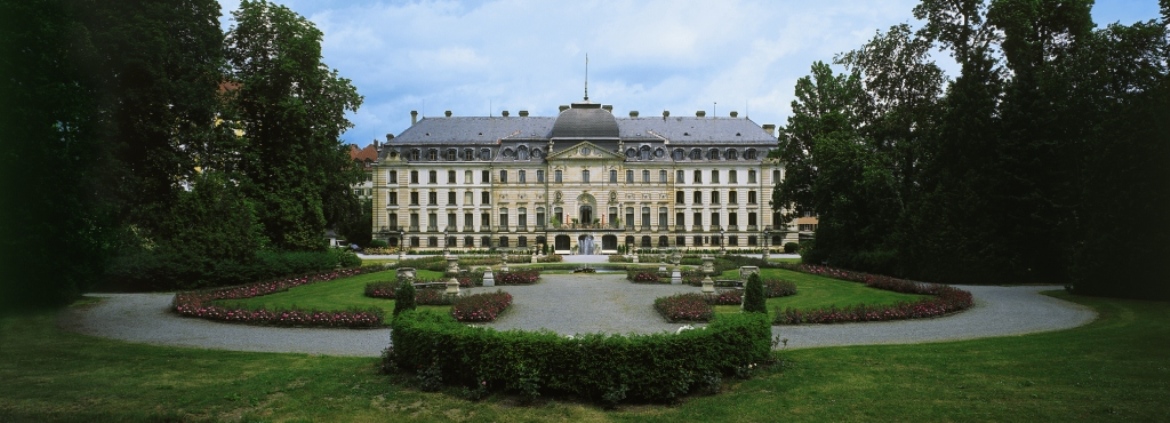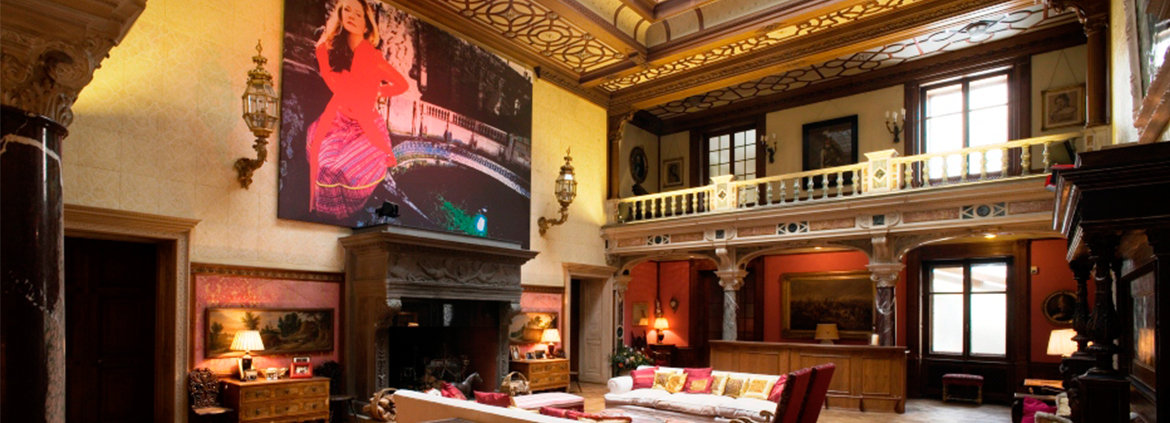The castle of the princes of Fuerstenberg is located at the source of the Danube, in the middle of an extensive park with old trees, atmospheric ponds and watercourses. It was fundamentally rebuilt between 1893 and 1896, and since then has uniquely combined the prestige and space of a residence with the living comfort of a villa.
Since its reconstruction a good 130 years ago, Donaueschingen Palace has been one of the most important residences of the Belle Epoque in Germany. In keeping with the historicist taste of the time at the end of the 19th century, the rooms are varied in the style of the French epochs of the Regence, Louis quinze, Louis seize and Empire. Representative portraits of members of the princely family, valuable furniture and tapestries complete the overall picture.
Donaueschingen is still the centre of life for the princely family of Fürstenberg. Since 2003, the castle has also been the family’s residence again, after having been used for many decades only for festivities and receptions and as a museum. Despite its predominantly private use, a look inside the residence is permitted as part of a guided tour.
Architectural history of the castle
The residential palace in Donaueschingen has a long building history. A first building at this point was built in the 16th century. However, it only briefly served as a residence for one line of the House of Fürstenberg. It was only under Prince Joseph Wilhelm Ernst, who at the beginning of the 17th century was able to unite the possessions of the House of Fürstenberg, which had previously been divided between different lines, that Donaueschingen came into focus again and this time permanently. Because it was conveniently located at the symbolic source of the Danube and also near the old ancestral castle on the eponymous Fürstenberg.
From 1723, however, Prince Joseph Wilhelm Ernst only built a relatively simple, elongated building that was to become part of a multi-wing baroque palace complex that was never built. This complex could no longer meet the high standards of the 19th century in terms of comfort and representation. In 1892, Prince Karl Egon IV and his wife Dorothée, née Princess of Talleyrand-Perigord, began remodeling. At that time, not only was the simple, elongated facade of the old baroque palace broken up by the protruding central wing with a balcony, two side projections and a mighty dome.
The interior has also been completely redesigned. Since then, the Donaueschinger Residenz has uniquely combined the representative claim and the space of a castle with the living comfort of a villa and all this under the sign of a French-influenced sense of style. In 2002, S.D. Prince Heinrich and family entered the building. It is thanks to the renovation measures initiated at that time and only completed in 2007 that Donaueschingen Castle is once again one of the most impressive and best-preserved castles in Baden-Württemberg.


